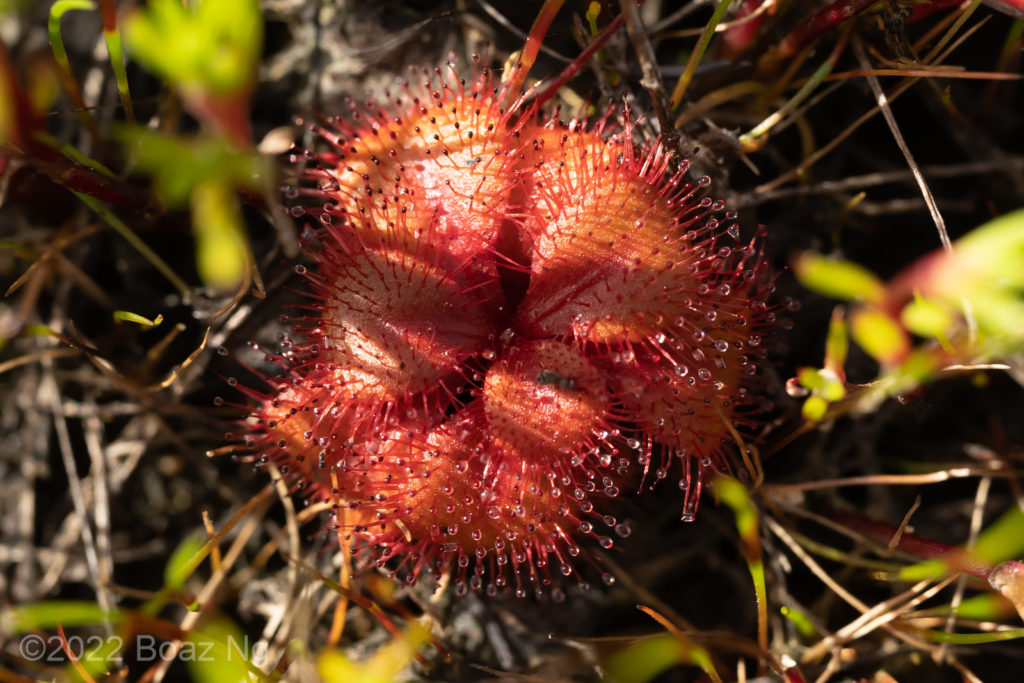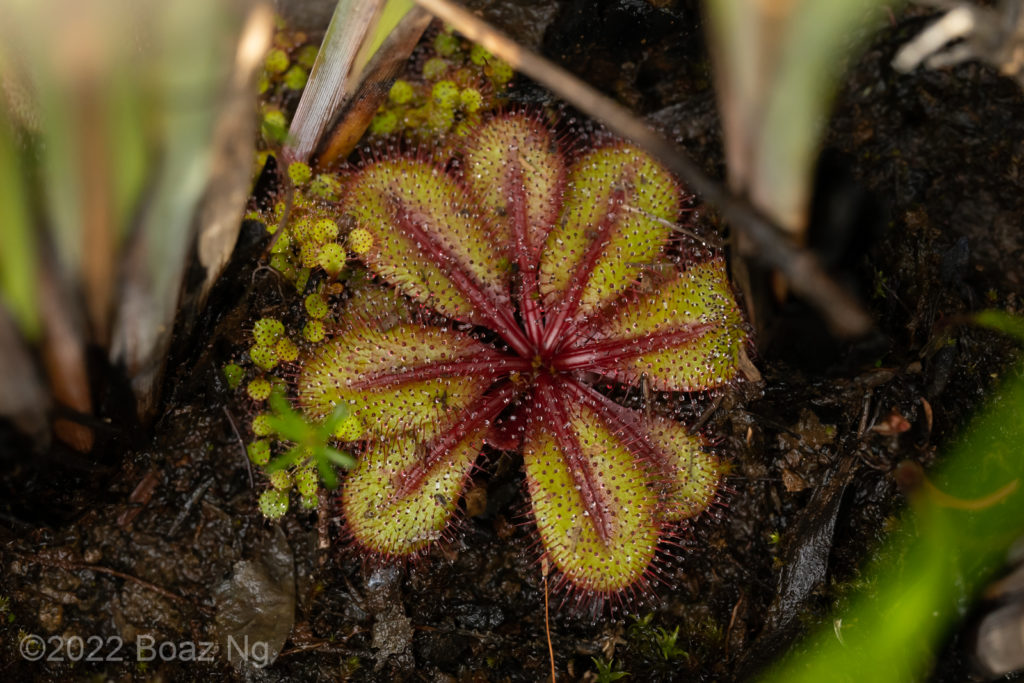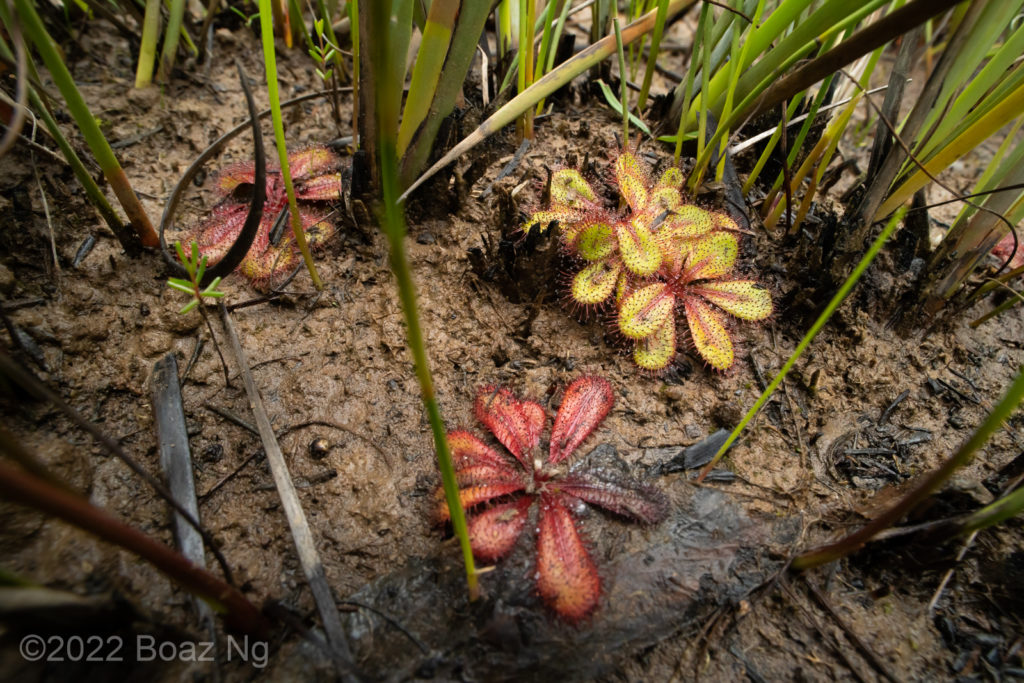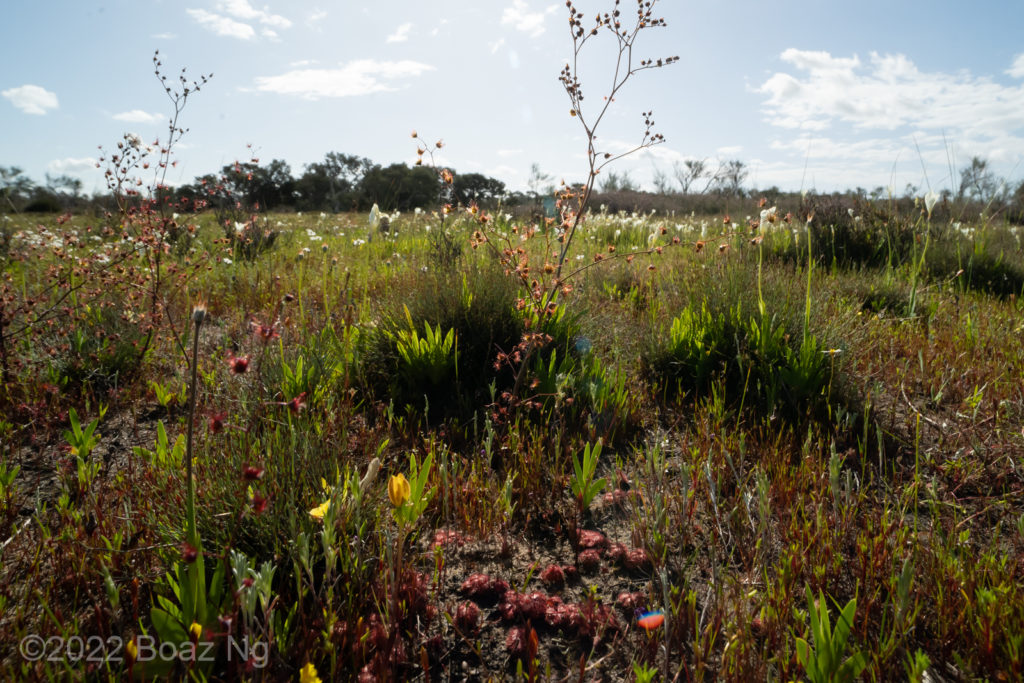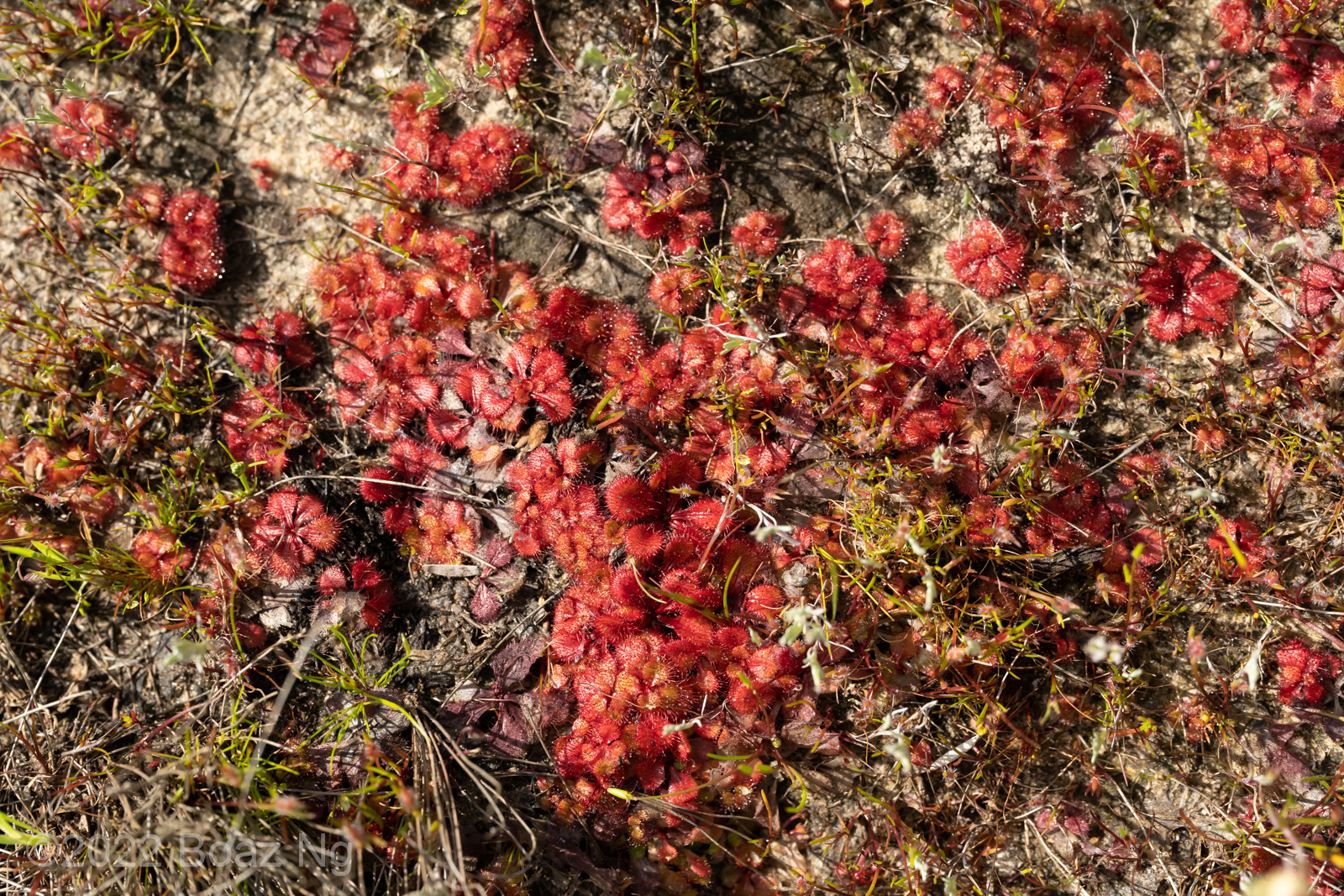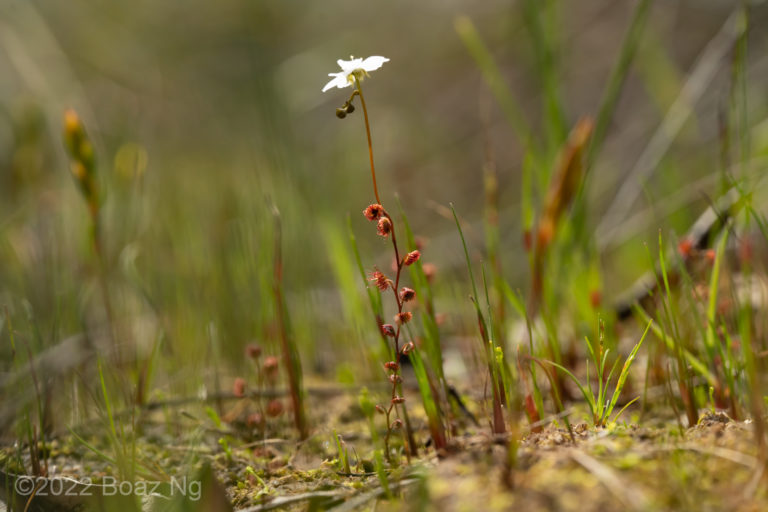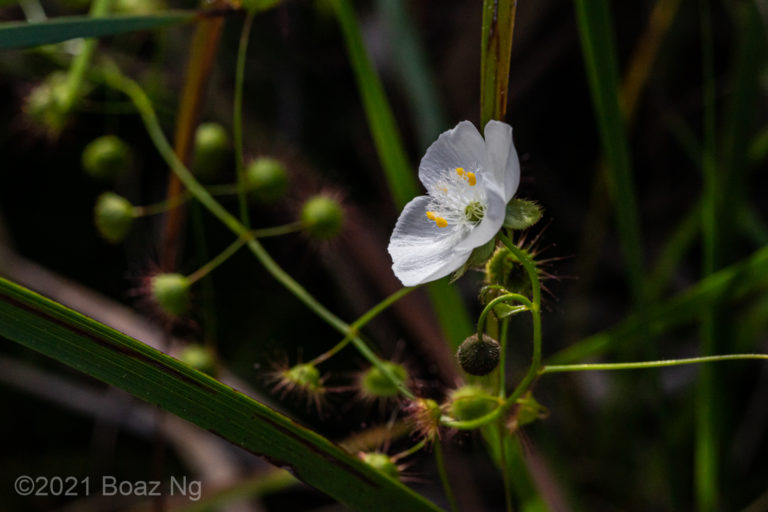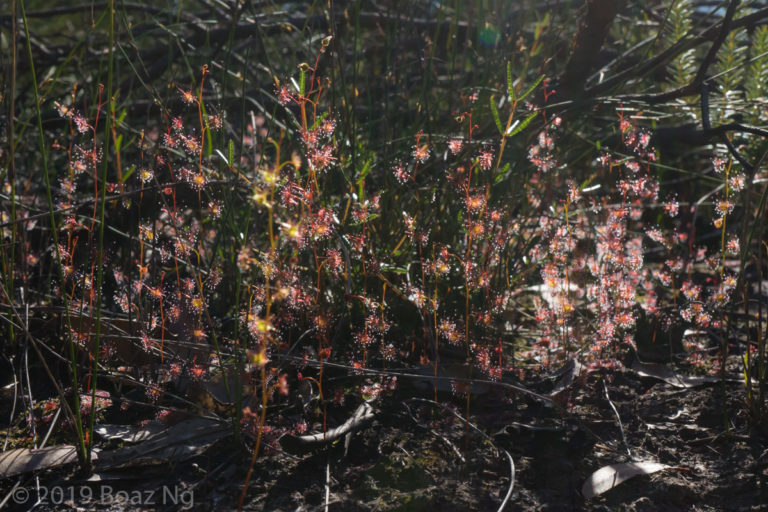Drosera tubaestylis is a rosetted tuberous sundew from south-west Western Australia. The sundew is named after its trumpet-shaped styles.
Drosera tubaestylis is a small sundew that grows from 1.5-3.5 cm in diameter. The leaves range in shape from almost circular to more elongated ovals with rounded edges. A raised midrib appears in the centre of the leaves for about 2/3 the length of the leaf. The flowers are produced singly on each stalk, with a few flowers per plant. The styles are small and trumpet-shaped, forming a tightly packed cluster.
The species grows in wet habitats mainly on the Swan Coastal Plain, with scattered populations west of the Darling Scarp. It inhabits seasonally wet peaty soils at the margins of swamps and wide creek systems. Flowering occurs in late Autumn.
Drosera tubaestylis is most similar to Drosera bulbosa, with both plants having a rosette of leaves with a raised central vein. Drosera tubaestylis is distinguished by its tightly clustered, trumpet shaped styles (those of D. bulbosa are long and thin), and is usually smaller and rounder (D. bulbosa is usually larger with more pointed leaves). Drosera tubaestylis often grows with D. rosulata, which shares a similar rosette shape. It is distinguished from D. rosulata by its raised central vein (the midrib of D. rosulata is sunken into the leaf).
